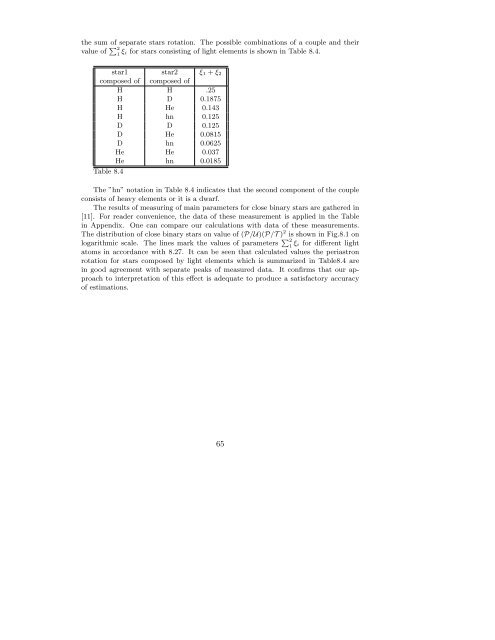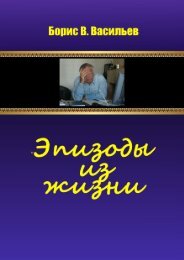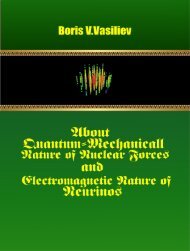VbvAstE-001
Book Boris V. Vasiliev Astrophysics
Book Boris V. Vasiliev
Astrophysics
You also want an ePaper? Increase the reach of your titles
YUMPU automatically turns print PDFs into web optimized ePapers that Google loves.
the sum of separate stars rotation. The possible combinations of a couple and their<br />
value of ∑ 2<br />
1<br />
ξi for stars consisting of light elements is shown in Table 8.4.<br />
star1 star2 ξ 1 + ξ 2<br />
composed of composed of<br />
H H .25<br />
H D 0.1875<br />
H He 0.143<br />
H hn 0.125<br />
D D 0.125<br />
D He 0.0815<br />
D hn 0.0625<br />
He He 0.037<br />
He hn 0.0185<br />
Table 8.4<br />
The ”hn” notation in Table 8.4 indicates that the second component of the couple<br />
consists of heavy elements or it is a dwarf.<br />
The results of measuring of main parameters for close binary stars are gathered in<br />
[11]. For reader convenience, the data of these measurement is applied in the Table<br />
in Appendix. One can compare our calculations with data of these measurements.<br />
The distribution of close binary stars on value of (P/U)(P/T ) 2 is shown in Fig.8.1 on<br />
logarithmic scale. The lines mark the values of parameters ∑ 2<br />
1<br />
ξi for different light<br />
atoms in accordance with 8.27. It can be seen that calculated values the periastron<br />
rotation for stars composed by light elements which is summarized in Table8.4 are<br />
in good agreement with separate peaks of measured data. It confirms that our approach<br />
to interpretation of this effect is adequate to produce a satisfactory accuracy<br />
of estimations.<br />
65













